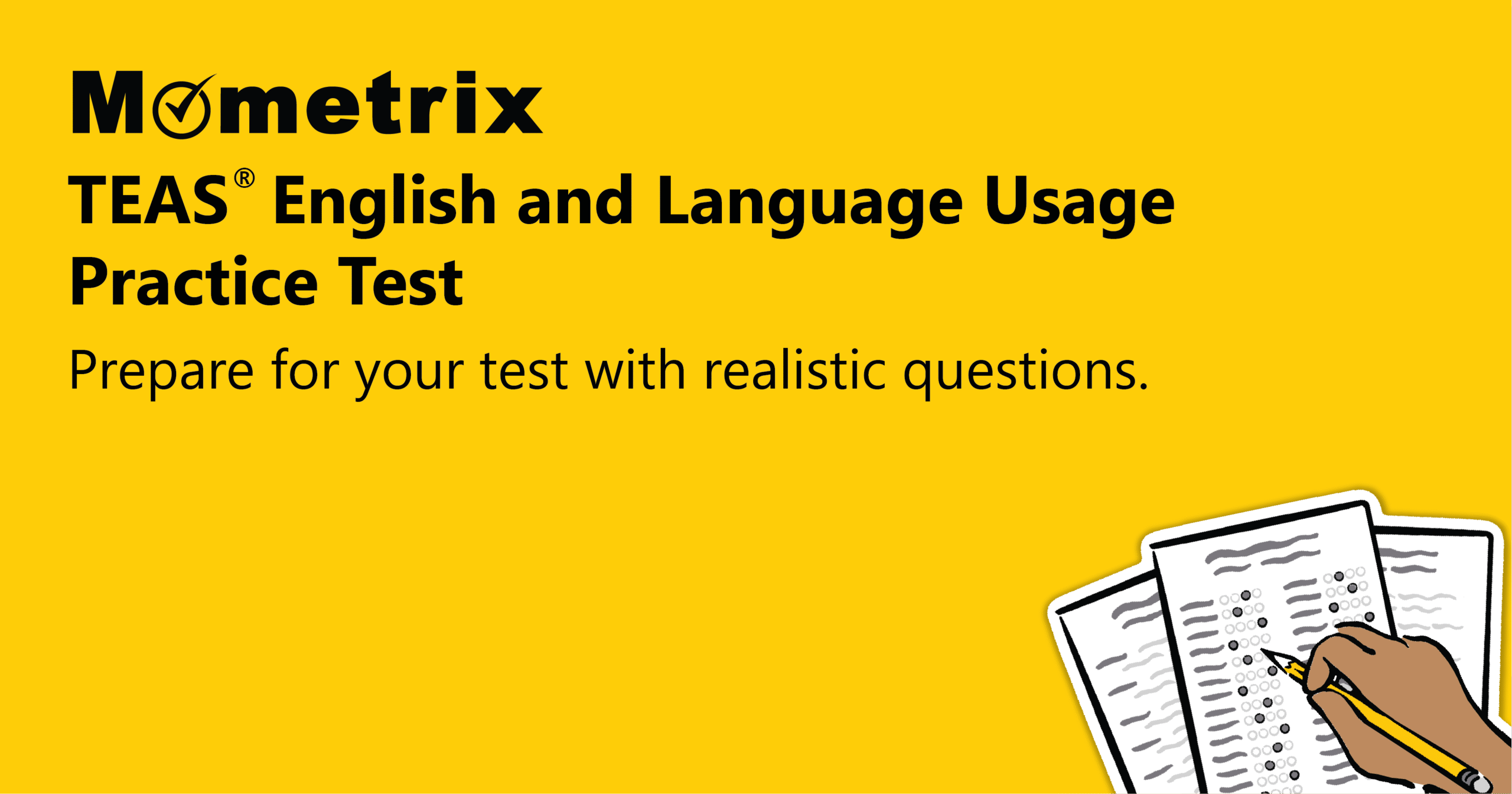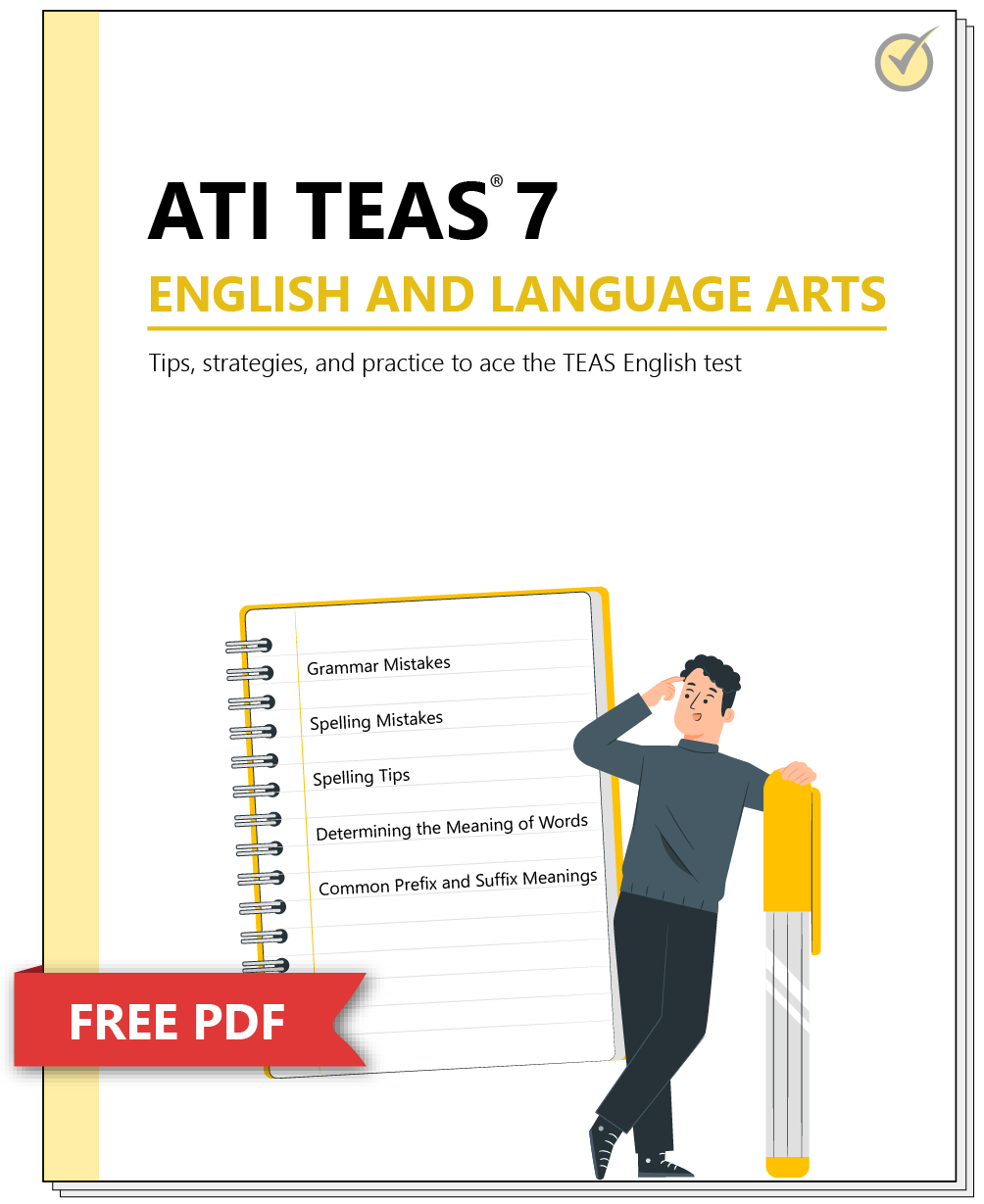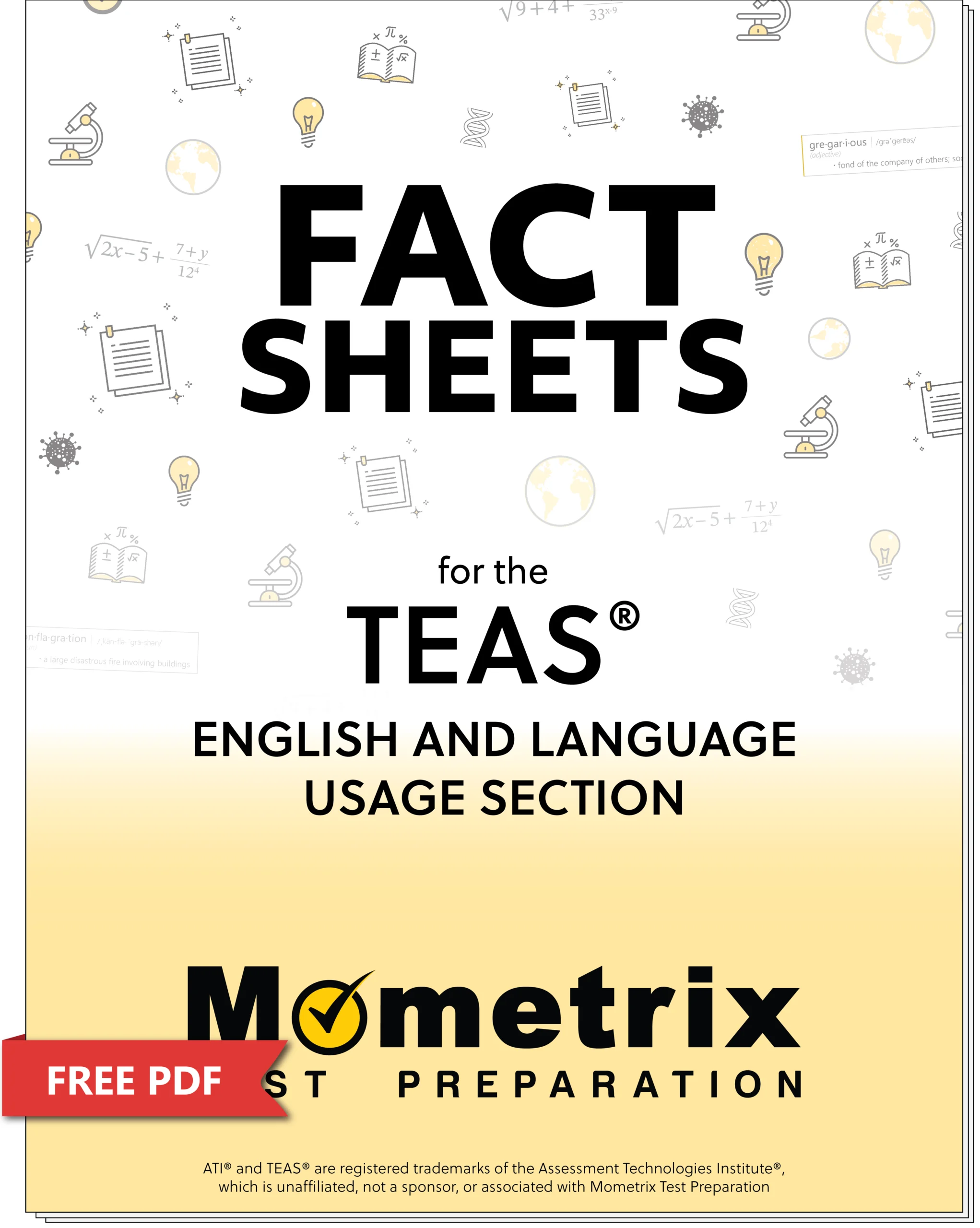The English & Language Usage section of TEAS® challenges your grammatical and sentence structure skills, as well as your ability to make predictions based on passages. To help you prepare for this section of the TEAS, this page contains everything you need to know, including what topics are covered, how many questions there are, and how you can study effectively.
What’s on the TEAS English Section?
TEAS Checklist

Top 5 Most Challenging TEAS English Questions
Over the last year, we’ve compiled the data from nearly 20,000 test-takers who tried their hand at the practice test at the top of this page. According to the data, around 65% of people answered these five questions incorrectly.
Answer each question and read through the answer explanation, whether you got the answer right or wrong. This will help you ensure you’ve got the topic mastered.
Whether you struggled with these questions or aced them on your first try, be sure to take the full practice test to get a better idea of how prepared you really are!
1. Which of the following are LEAST likely to require citations? (Select all that apply.)
2. Which of the following sentences has a complex sentence structure?
3. Which of the following scenarios would call for revision of any informal language to formal language? (Select all that apply.)
4. Which of the following will likely need a citation in order to be included in your essay? (Select all that apply.)
5. Read the following:
- We do not know the exact impact that infrequent bathing had on these people of the past. However, today’s experts point out a few likely results of not bathing for extended periods.
- At many times throughout history, bathing was a rare activity for most people—particularly those who were not wealthy.
- While regularly showering or bathing is common practice today, such was not always the case.
- At first, the effects would be increased odor and an itchy scalp, but these would turn into fungal growth and frequent skin infections. So it is easy to understand how frequent bathing came to be adopted.
Which of the following choices shows the best chronological order for the sentences within the paragraph?
TEAS Online Course
If you want to be fully prepared, Mometrix offers an online TEAS prep course designed to give you everything you need to succeed!
Here’s what you’ll find in the TEAS course:
Everyone learns differently, so we’ve tailored the TEAS online prep course to ensure every learner has what they need to prepare for the TEAS 7 exam.
Click below to check it out!
TEAS English and Language Usage Tips
As a nurse, it’s crucial that you’re able to communicate clearly and accurately. Even small mistakes can lead to big misunderstandings.
To help you improve your English and communication skills and boost your confidence to conquer the test, check out this free TEAS English guide! This PDF is full of tips, tricks, and examples to help you apply what you learn.
TEAS English Fact Sheets
Sometimes, all you need is a quick review to brush up on the basics.
Check out our free TEAS English fact sheets below to get a refresher on things like nouns, verbs, interjections, adverbs, and more!
FAQs
Q
Who takes the TEAS?
A
Students who are interested in nursing and allied health programs take the TEAS exam to gain admission into the program. It’s common for schools to require TEAS scores as a prerequisite, so students are encouraged to learn more about their program’s eligibility requirements.
Q
How many questions are on the TEAS English and Language Usage exam?
A
The English & Language Usage section contains 37 questions, four of which are pretest questions which have no effect on your final score.
Q
How long is the TEAS English and Language Usage exam?
A
Students will have 37 minutes to complete the 37 questions on the English & Language Usage section.
Q
What is a passing TEAS English and Language Usage score?
A
It’s common for the programs to require students to earn a total score of at least 60%-70%. Nursing programs across the country are highly competitive, so students are encouraged to score higher than the program’s minimum score requirement.
ATI® and TEAS® are registered trademarks of the Assessment Technologies Institute®, which is unaffiliated, not a sponsor, or associated with Mometrix Test Preparation.






